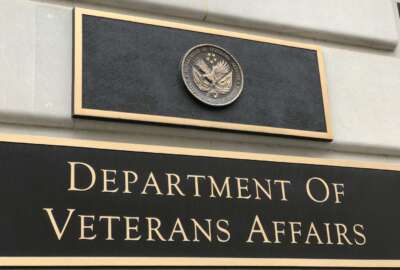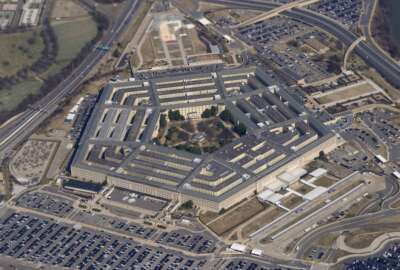DoD trying to fix holes in the military voter assistance program
The DoD inspector general found more than half of military voting assistance offices were unreachable using contact information on the website. Pam Mitchell,...
wfedstaff | April 17, 2015 4:08 pm
Under laws passed in 2009, the Pentagon is supposed to have voting assistance offices for military members on each and every one of its bases. But an inspector general’s review during this year’s election cycle found more than half of those offices were completely unreachable.
The Military and Overseas Voter Empowerment Act included several provisions designed to improve voter participation by military members and civilians living overseas.
One of the biggest was to require DoD to set up full-time voter assistance offices on each of its bases around the world, except for those in war zones. 
Pam Mitchell, the interim director of the Federal Voting Assistance Program (FVAP), told reporters Wednesday that there’s an explanation for that.
“The contact information they used very simply was outdated,” she said. “In a military environment, things change. Phone numbers change, email addresses change.”
All voter assistance information up-to-date, official says
But Mitchell said FVAP has checked the information on its website so servicemembers know who to contact and made fixes where necessary. And she said officials will make sure it stays fixed.
“We’ve personally called all 221 offices and we are certain that the information posted to our website is correct,” she said. “We are committed between now and the general election of calling each of the 221 offices every single week to make sure that we have the most updated information.”
But the IG also found that DoD might not have nearly the number of offices it actually needs in order to comply with the spirit of the MOVE Act. One reason is some of the joint basing arrangements that came about under the 2005 round of Defense base realignments and closures (BRAC).
For example, what used to be Langley Air Force Base and Fort Eustis — two Virginia bases 20 miles apart — are now technically one installation: Joint Base Langley-Eustis, which has only one voter assistance office. So a servicemember might have to make a 40-mile round trip to get from his duty station to get to the closest voting assistance office in order to fill out an absentee ballot request.
But Mitchell said there are plenty of other ways for military members to get help voting and registering to vote, many of them online and through social media, the preferred methods for the bulk of the uniformed workforce: 18- to 25-year olds.
For example, any voter can go to FVAP’s website and walk through an online wizard that will register them to vote and request an absentee ballot from their state’s election officials.
“We certainly agree with the IG that the most important thing we can do is to find the most effective way to maintain assistance for all of our absentee voters,” she said. “We’re absolutely committed to working with all stakeholders, including Congress, to make sure that voting assistance remains the best it’s ever been. I spend 25 years in the Army. I can only wish that when I was in uniform I had access to the tools and resources that are available to servicemembers today.”
Congress passed MOVE Act but did not fund it
When Congress passed the MOVE Act and required the brick-and-mortar offices on every military installation, it didn’t provide extra funding to operate them. The IG found that might be one reason they’re not working as lawmakers intended.
But the report also found the walk-in offices might not be the best use of resources for military voter outreach. So the inspector general said DoD should ask Congress to make the voting assistance offices optional and free up money for other programs like social media outreach.
According to a report last week by an outside advocacy group, requests for military absentee ballots are down significantly from the last presidential election cycle.
The nonprofit Military Voter Protection Project surveyed election officials in several states with large military populations. The starkest results were in Virginia, where only 1.4 percent of military voters have requested a ballot so far. Figures from North Carolina were only slightly better at 1.7 percent. Ohio reported 3.3 percent.
But Mitchell contends that comparing 2012 to 2008 isn’t quite fair.
“We maintain a record of downloads from our website of the Federal Postcard Application, which is in itself a request to register to vote as well as a request for an absentee ballot,” she said. “If we look back at 2004, the last election when there was a sitting incumbent and an uncontested primary in one of the parties, we’re essentially running neck-and-neck with the numbers of FCPAs downloaded. I strongly believe that voting assistance is the best it’s ever been.”
Mitchell said in the end, it’s servicemembers’ personal responsibility to decide to register to vote and cast a ballot.
This story is part of Federal News Radio’s daily DoD Report. For more defense news, click here.
RELATED STORIES:
DoD personnel miss out on absentee ballots
Federal voting program’s objective: make itself obsolete
Copyright © 2024 Federal News Network. All rights reserved. This website is not intended for users located within the European Economic Area.
Jared Serbu is deputy editor of Federal News Network and reports on the Defense Department’s contracting, legislative, workforce and IT issues.
Follow @jserbuWFED






